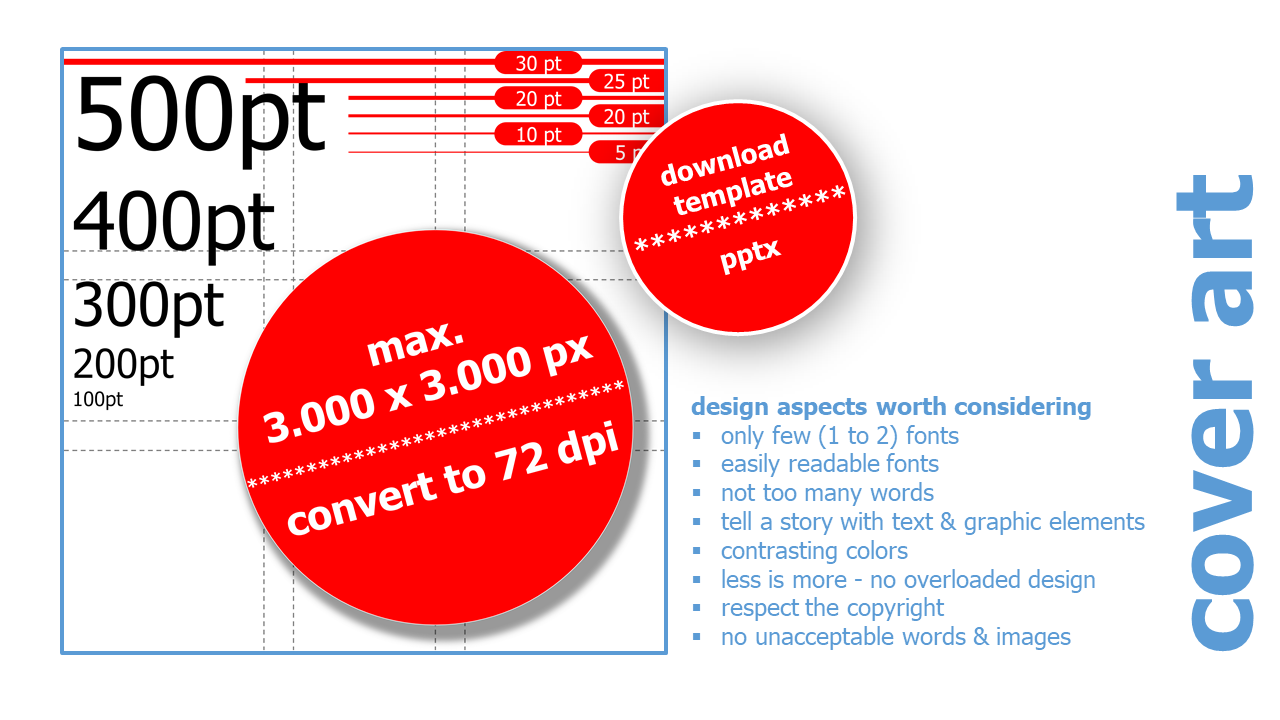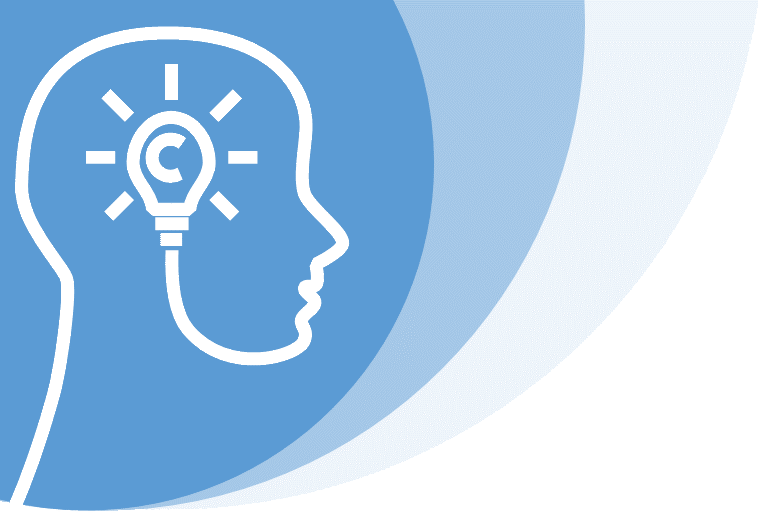
Podcast
Creation, recording and distribution of your (academic) podcast


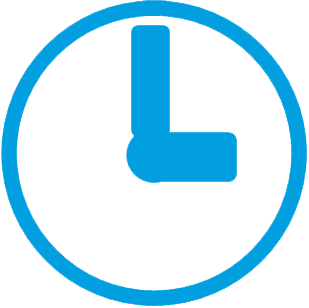
Topics & Content
- Listen to the Podcast
- What is a Podcast?
- myPodcast
- Academic Podcast / Science & University Podcast
- Podcast Roles
- Me / Them / What / How
- version of me
- my story & the effect / support / change to offer
- typical listeners = avatar persona
- Create Your Podcast In 3 Steps
- a) Goal
- b) Style
- c) Equipment & More
- How to Produce an Episode
- 1. Script
- focus on the most important content or results
- clear structure
- personally speaking
- repetitions are important
- 2. Recording
- Solo Recording
- several people in the same room
- Multiple People in Different Locations
- 3. Post Processing / Post Production
- Audio Editing
- test recordings post-processing:
- Opener / Intro & Closer / Outro
- 4. Publish / Publication
- RSS / XML Feed
- Cover Art & Images
- Shownotes & Transcript
- MP3 Audio File
- Bonus Track: Recording Tips
- test recordings microphones & transmissionpossibilities
Listen to the Podcast ^
I can't talk about a podcast if I don't offer one myself. When I started with this content, I quickly realized that it would also need an extra workshop as a university course. Yes, and that was the start of my own podcast and a few episodes where you can listen to what a podcast means in the academic environment and how you can design, record, mix and publish an episode or a whole podcast yourself. So: copy the podcast feed to your preferred podcast player, switch on the speakers or put on your headphones and... you are ready to go.
-
Intro & InfoAnzahl
This episode is about the structure and organization of the course.
Please introduce your favorite podcast at the beginning and describe the structure of a typical podcast episode. The first part of the course is about who produces an academic podcast and why.
The second part is all about creating your own podcast. From content conception, transferring story telling to podcasts, to recording and audio mixing techniques.
The end result is a professionally mixed podcast episode that will be published.
**TIMECODE**
00:00 Welcome
00:32 Intro
01:04 Course Preparation - Your 60 sec. Presentation
02:42 Course Structure - #1 Theory
03:02 Course Structure - #2 Produce your own Episode
03:37 Working in Groups
04:09 Preset Times & Free Time Management
04:33 About Grading
04:53 I Be Your Coach
05:10 Conclusion & Outro
-
Benefits & Challenges of PodcastsAnzahl
This episode is about what a podcast even is. I talk about the origin of the word podcast, its democratic possibilities, its successes in education, but also the opportunities and challenges for you: You can listen to podcast almost anytime, anywhere - even multitasking is possible, but you have to stick with it, a quick overblock por jumping back and forth is much more cumbersome than with text and video. Then this episode is about the emotions that podcasts can convey very well and your imagination. At the end I talk about a few tricks for low cost recording, but allowing studio quality.
**TIMECODE**
00:00 Welcome
01:20 Intro
01:59 Podcast is a Portmanteau
02:40 Podcast is a Democtratic Medium
03:21 Podcasts can Support Education
04:07 Podcasts are Always with You
05:08 Podcasts need Continous Listening
06:18 Podcast Transport Emotions
07:57 Podcast Low Cost Production
08:22 Podcast Low Cost Studio
09:40 Podcast Open Source Audio Editing
09:52 Podcast Single Recording for Interviews
10:25 Outro
-
What are Academic Podcasts?Anzahl
Academic podcasts have something to do with science. So far so good. But what moves science to babble in podcasts? That's what this episode is about. I take a look at content creators of academic podcasts and discover why they are producing audio stuff for their listeners.
**TIMECODE**
00:00 Welcome
00:17 Intro
00:52 Individual Researchers & Students
02:18 Universities and Academic Institutions
03:39 This is all Marketing
04:06 Podcasts about Science
04:35 Podcasts for Education
05:40 (Public) Radio & TV Stations
07:39 Scientific and Scientific-Ethical Claim
08:27 Diversity Instead of Uniformity
08:37 Show your Sources
09:03 Outro
-
How to Start a Podcast?Anzahl
Podcasts are easy to create, anyone can do it. And at the same time, there are still a few important aspects to consider in advance to make your podcast a success. And that's what this episode is all about. I'll tell you how you need to first think about what you're going to tell about yourself and who you're going to tell it to. Then I also talks about avatars. This sounds like a fantasy story, but it's about building a strong empathy with your listeners. So stay tuned... on the podcast about podcasting.
**TIMECODE**
00:00 Welcome
00:43 Intro
01:21 Do Not Start Running Directly
01:33 The 4 Important Questions Before You Start: Me, Them, What & How
04:12 Let Your Avatr Help You
07:30 4 Stepts to Create Yur Avatar Persona
10:09 Outro
What is a Podcast? ^
A podcast is a series of individual episodes. These can be related by the same overall content, created by one or more people (creator / cocreator or producer / coproducer) but also in a more less defined context. Usually it is spoken text, sometimes with songs / music often as an intro and outro or a jingle in between) in an audio format, as the artificial name podcast reveals. This name includes the word broadcast, which includes distribution of the audio content. In production, podcasts are simpler and thus usually cheaper than videos.
In some cases (e.g. recording of lectures) podcasts can also contain slides / slides to video sequences. Even if here the actual form of the podcast is extended.
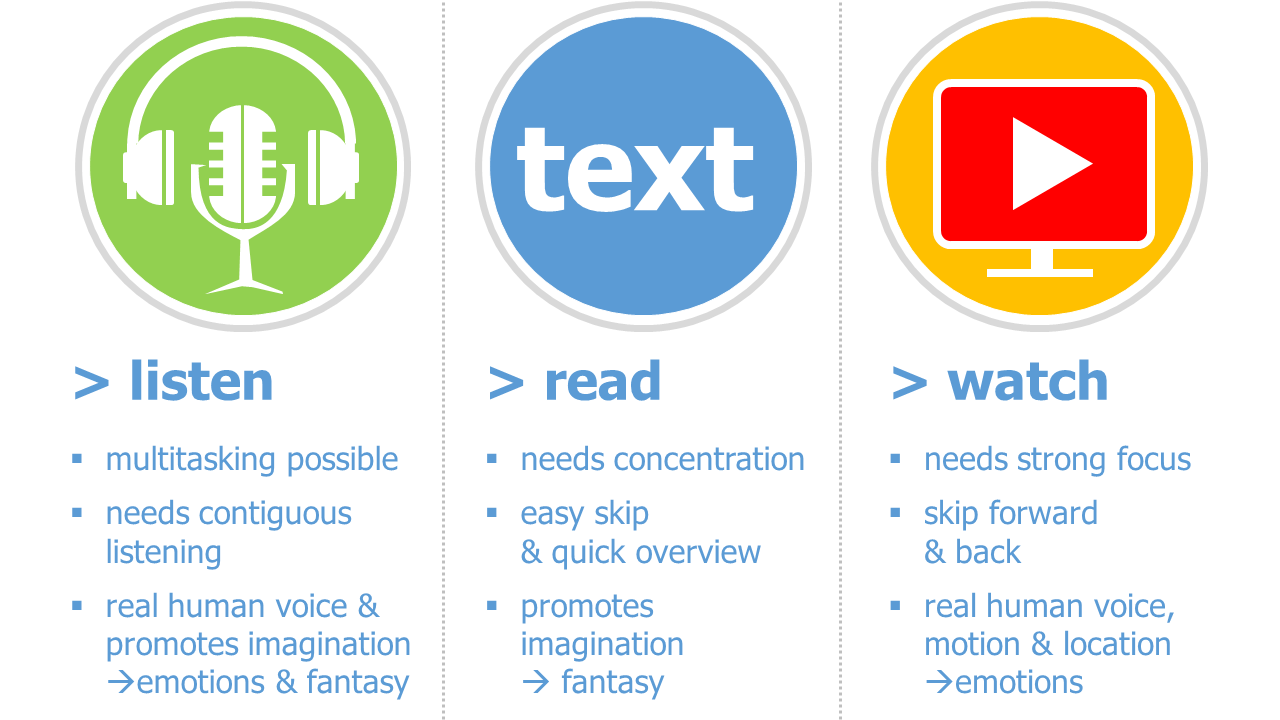
Unlike text and video, podcasts can often be consumed on the go. On the way to my workplace, while jogging or cooking and in many other situations where podcasts can be listened to like multitasking. Reading text requires attention and watching video also requires a focus only on that. Jumping to another place or getting a quick overview is very difficult with podcasts. Here, text has the clear advantage, but even with videos, the overview is better when rewinding and fast-forwarding to jump to another scene. A big advantage over text is that podcasts can deliver emotions. More than with text, the voice offers an insight into the personality and yet leaves more imagination than with a film.

myPodcast ^
-
FMI Podcast : podcast as part of a teaching unit with students from the Facility Management & Real Estate Management degree program
-
Semester Abroad Podcast : podcast about semester abroad experiences with students from the Energy & Sustainability Management and Facility Management & Real Estate Management degree programs.
-
echt:nachhaltig : podcast about sustainable professions, ideas and initiatives
Academic Podcast / Science & University Podcast ^
Academics often use podcasts to reach a wider audience and disseminate their research findings, as well as for self-promotion. This can range from a kind of diary in the course of a PhD or research project, to science discussion and talks on current topics (usually accompanied by a script with traceable sources). Podcasts are also produced in conjunction with blogs and are intended to transport content to additional channels. Academic podcast may be about the state of the art in research and may, for example, cover current research findings or summarize research findings. Podcast are also used in higher education for the presentation of everyday student life or as a preview of career opportunities (when e.g. alumni report). But podcasts are also produced directly by students as a result of teaching units and are then used as performance assessments instead of, for example, term papers.
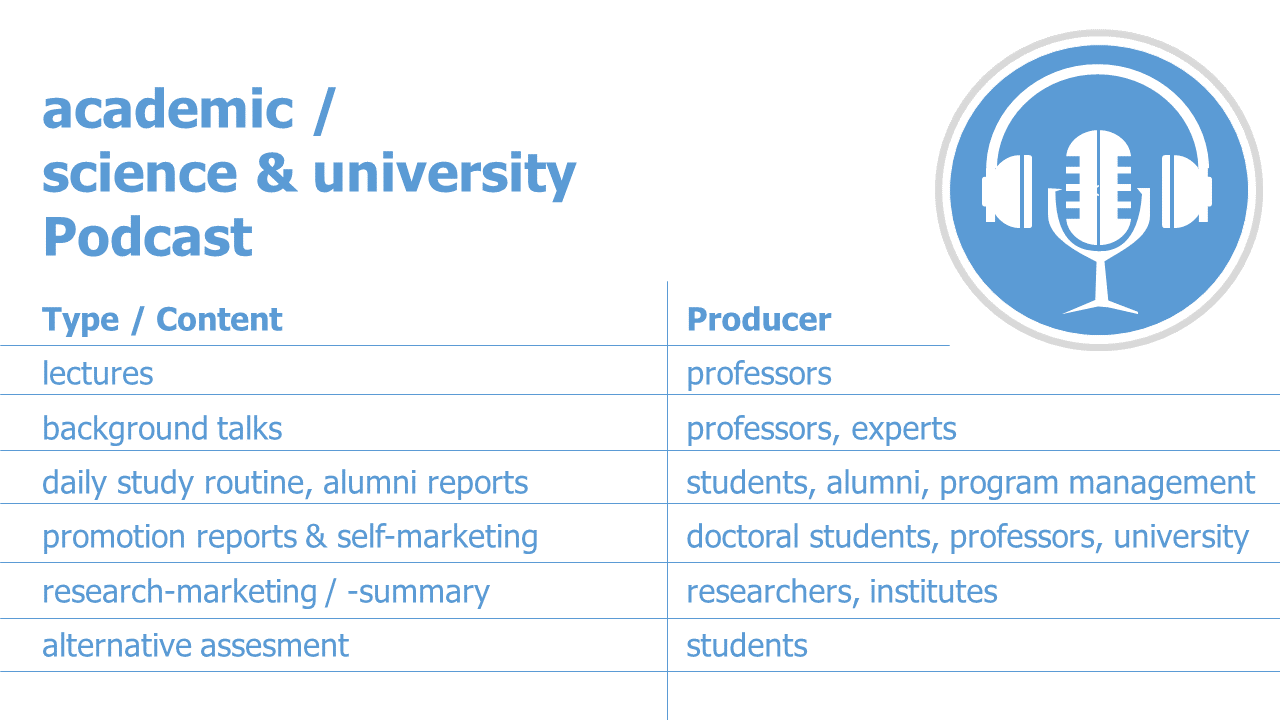
Podcast Roles ^
In general, all partners own the copyrights in a podcast conversation. As a rule, the partners transfer the (unrestricted) rights of use so that the podcast episode can be published. This means that all persons give the creator / producer the rights of use and publication, or - as with my own podcast episodes - all persons give each other the respective rights of use and publication, so that all participants may pass on the episode. This does not affect the copyright of the episode. Only one person can be the creator or producer, or several people can be co-creators or co-producers.
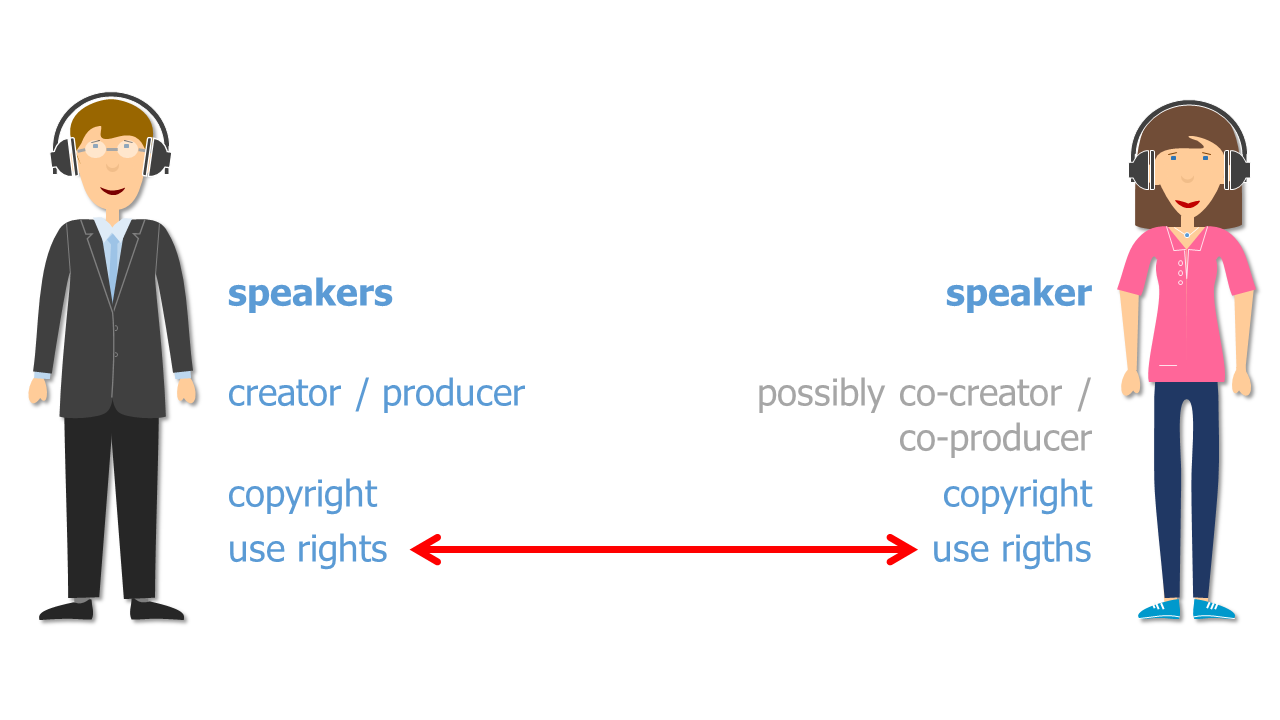
Me / Them / What / How ^

|
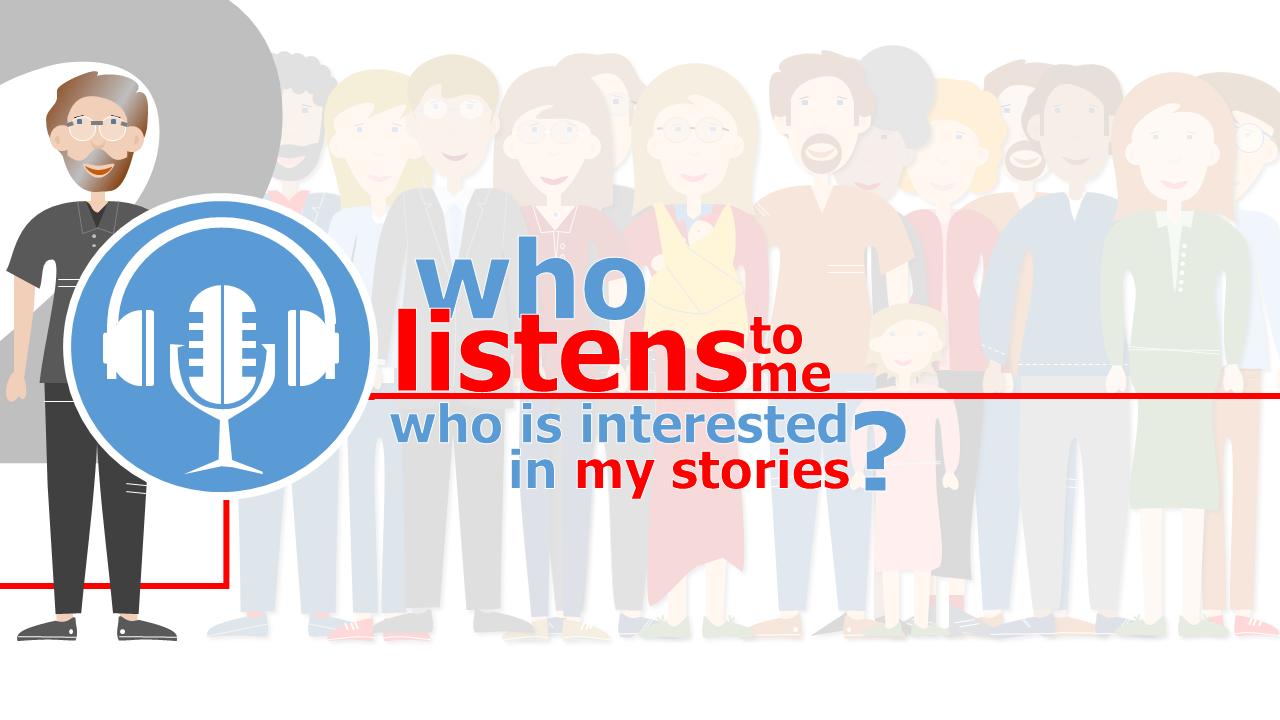
|
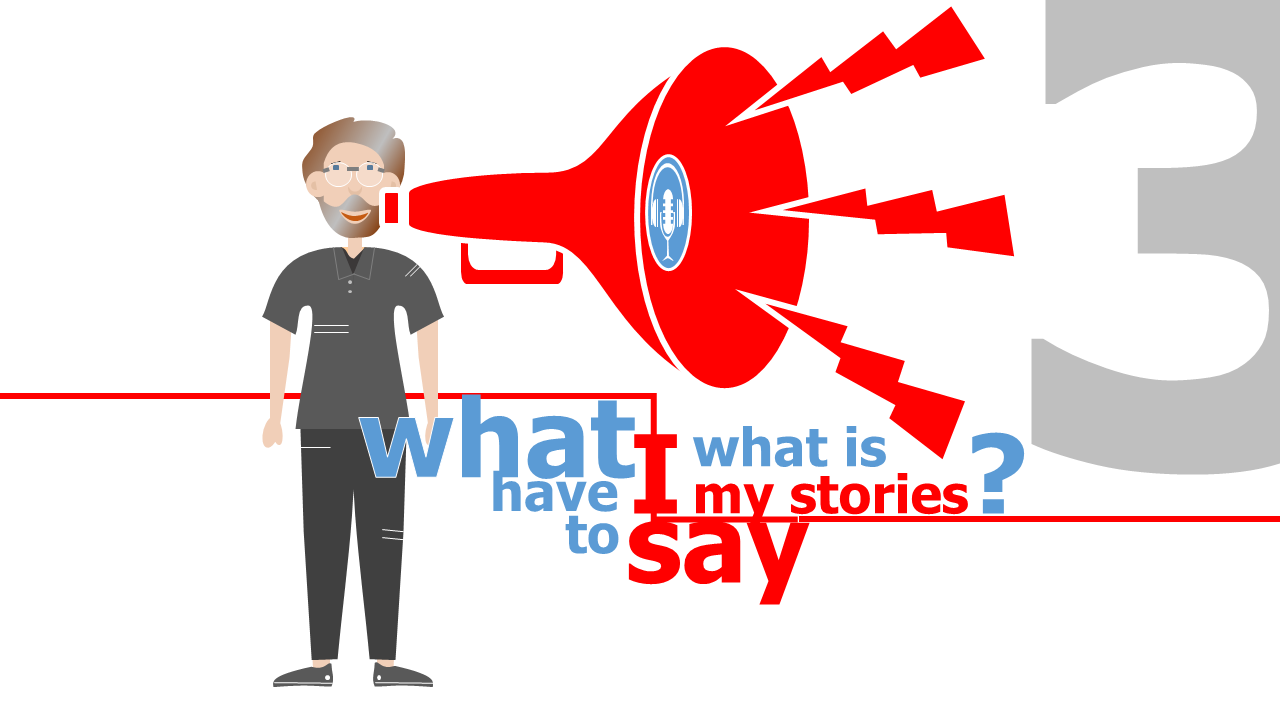
|
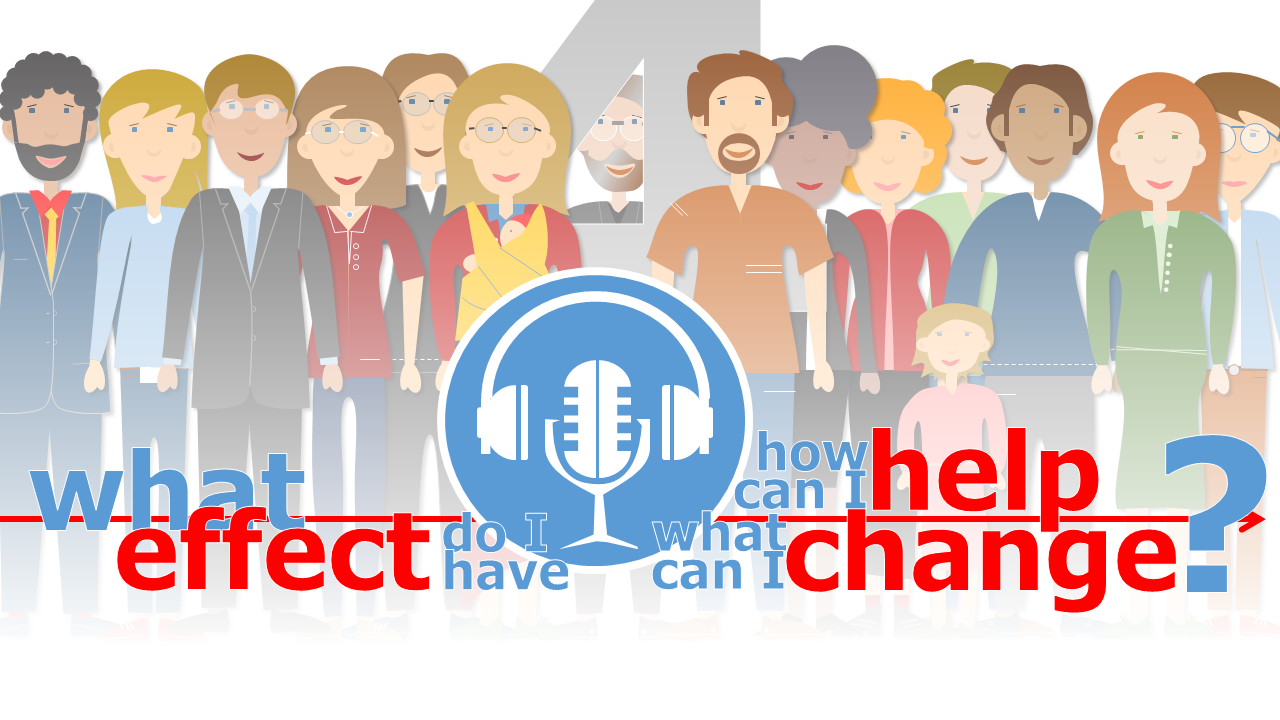
|
version of me ^
A podcast is about personal stories and experiences. That's what listeners are interested in. But you can't and won't spread out your whole personality. You must and should choose from your many characteristics, experiences and adventures. Think carefully about which version of yourself you tell in the podcast. And this also applies to guests and co-creators.
my story & the effect / support / change to offer ^
After it is clear what I want to tell about the personality of me / or my guests, it goes to the actual story. When stories are told, many are enthusiastic and attentive. However, it should not be an end in itself to babble, but to look at the end. What can I effect with it? Where can I support my customers and listeners? What can I offer to change something? This must be clear before the story starts.
And then it's all about storytelling.
typical listeners = avatar persona ^
Listeners want to feel addressed. To be successful, the podcast must be empathetically related to the listeners, and be listener-centered. Start by considering which group of people out of the many possible listeners should be particularly addressed by the podcast. The first step is to roughly determine the audience. The second step is to take a closer look at typical listeners. The methodology of Avatar Persona will help you to empathize with your audience.
Create Your Podcast In 3 Steps ^
Before recording a podcast episode, it is important to be clear about the goal of the podcast. Therefore, the following 3 steps should be taken before the actual production
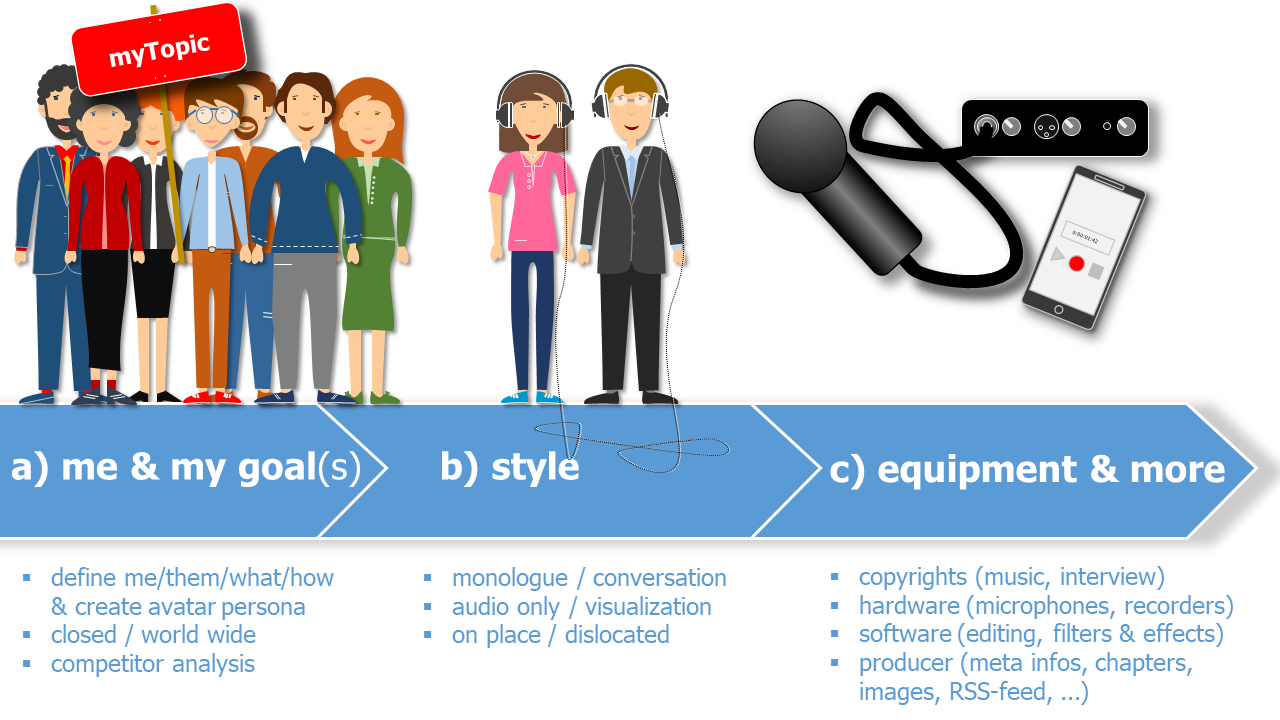
a) Goal ^
- Which version of me to present? Define what you want to talk about in the podcast. What do you want to tell about yourself or others and what do you want the listeners to hear?
- Who are the listeners? The more clearly the listeners are defined, the easier it is to customize content and be empathic to them.
- What is the goal of the podcast? Do not make / set too many goals! Less is more!
- What content should be included? Does the content fit the goal and the target group? Variety is important but also a focus!
- Closed or available worldwide? Especially when using copyright barriers, e.g. in teaching and research, it is important to have exclusively a closed circle of listeners. This can be done, for example, when publishing the podcast exclusively via a learning platform. If a broad, public / worldwide audience is to be addressed, the platform on which a podcast is distributed plays a decisive role. Here, in addition to the production of the episodes, a high level of marketing effort must be factored in so that the podcast reaches the target group.
b) Style ^
- Is the podcast a joint conversation/interview, or does only one person speak? Conversations are usually more exciting and varied for the listeners. On the other hand, a single speaker is much easier to record.
- Audio only? With visualization? If it is to be a podcast that contains only audio, then the production is usually easier. Visualizations such as slide sets or even moving images need to be synchronized with the audio, but also provide more opportunities to understand and follow the spoken word through graphs, charts, etc.
- In the same room or dislocated / delocated? Somewhat simpler is a conversation in the same room. Technically more complex and usually more limited in quality is an online audio transmission. This has the advantage that the conversation partners do not have to come together.
c) Equipment & More ^
- Respect the Copyrights This concerns especially content like music. Own production of music up to purchased MusicLoops enrich the Podcast particularly with Intro and Outro.
- Hardware: Microphones and audio recorders must be matched to each other. Especially for voice recordings, dynamic cardioid microphones are suitable, which only record well from one side and thus hardly transmit disturbing noises from the environment. There are USB microphones and those that require an external audio interface. Recording can be done in an external recorder or directly (live) on the computer. Usually external recorders are safer and more portable, but cost more.
- Software: Each audio file must be post-processed. Again, options range from little post-processing (insert jingle and export as mp3 only) to extensive cutting and deletion of noise and errors. I myself do a lot of post-processing on audio recordings and cut out a lot of "ahs". Depending on the type it needs different software.
- Producer: Before an episode is on air, it must first be prepared as a podcast episode. Every podcast has a RSS / XML feed with all (meta) information. Finally you need a hosting server for the files and perhaps a website with additional goodies.
How to Produce an Episode ^
I explain here the individual production steps as I do them myself in my podcasts. I assume that there is an existing podcast, either given as part of a teaching unit or thought about by myself. I am not going into the steps to a podcast topic, to a content niche, to the market analysis needed for it, and the like. The following steps are meant to help like a HowTo and aim to provide practical and technical guidance.

1. Script ^
A script makes recording easier and often reduces post-processing of the audio file. I strongly recommend a script. What the script looks like depends on the speaker. Some people can speak in bullet points, others can speak a structured episode with mind maps and others need a written text.
I myself need about 30 to 40% of the time for the script or 2 to 3 times as long as the recording takes.
focus on the most important content or results ^
A podcast episode doesn't explain the whole world or all the findings of the research community. It is about an insight, which in the best case makes you want to get more information, more literature, ... makes. Therefore, the concentration on the really essential content is very important, and not more!

how long an episode should be
Some podcast episodes last several hours, others only a few minutes. But what is the right length for a podcast episode?
The optimal length of podcast episodes cannot be compared to the optimal length of social media videos. Unlike videos, you can cook, go for a run, or drive a car while listening to a podcast episode. Moreover, podcast episodes can be paused at any time and resumed later. I start in the morning in the bathroom, stop while showering (because I don't listen that well "under water"), and continue listening while making breakfast. If the episode isn't over yet, I just keep listening on my way to work, or even on the way home. Because that's the case, the most general answer to the question of how long is an optimal podcast episode is: a good length depends on the content. If the content takes 20 minutes, 30 minutes is too long for an episode and 15 minutes is too short.
In addition to this very general statement, categories can be divided based on episode length:
| time of an episode | application |
|---|---|
| 2 - 5 minutes | teasers and trailers |
| less than 10 minutes (often 5 - 7 minutes) | quick information on the way |
| up to 40 minutes (often 20 - 30 minutes) | this is the length of many podcasts; topic can be covered in sufficient detail and yet in an entertaining way |
| up to 100 minutes | episode with several topics, short stories or detailed interviews |
| more than 100 minutes | longer story with complex narrative structure; listeners certainly have to interrupt the podcast several times and still have to know exactly what was spoken before when continuing to listen (like reading a novel) |
Already on the basis of the script you can estimate how long your episode will be. You can do a calculation based on the speaking rate. How many words do you speak per minute? or even better: How many syllables do you speak per minute? The result gives a feedback from the length of the script to the duration of the podcast episode. Of course, there is no single figure for speaking rate. If you want to know how fast you speak, you have to time and count your words or syllables. But again, you can't always generalize. Of course, your speaking rate depends on the type of text! A typical number of words per minute can range from 100 to 200. If you go for the more precise statement of syllables per minute, the values here often vary between 200 and 280.
With this online calculator you can enter your script, the number of words or syllables yourself and calculate how long your episode will be, or vise versa.
Calculate Episode Duration
Calculate Number of Words / Syllables
clear structure ^
The listeners do not see a table of contents or a chapter number. Therefore, the structure of the episode must be logical and clear. Frequent references to where you are in the episode help the listener.
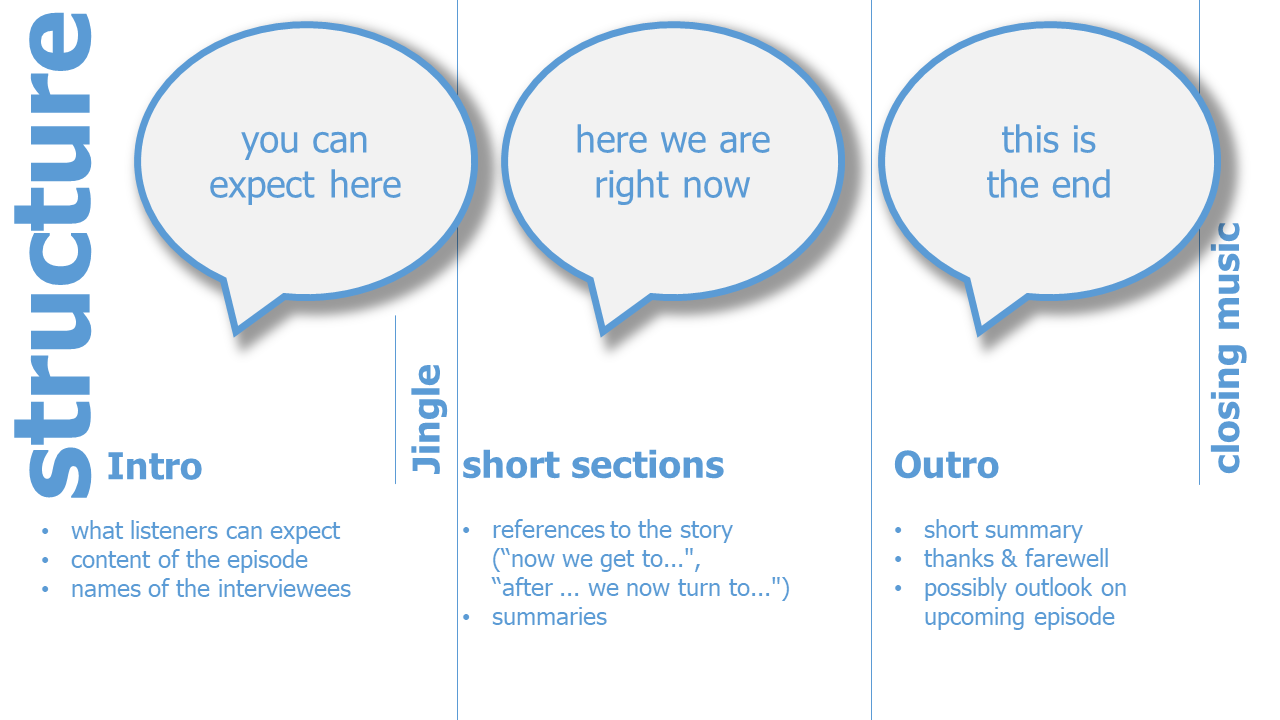
personally speaking ^
Podcasts are often about personal insights and backgrounds. Human interests brings a large audience. This is also reflected in the language. Unlike in a scientific essay or term paper, "I" occurs here and is even highly desired. In the podcast, one's own opinions, experiences and points of view can be addressed. This clearly distinguishes the podcast from a traditional scientific publication.
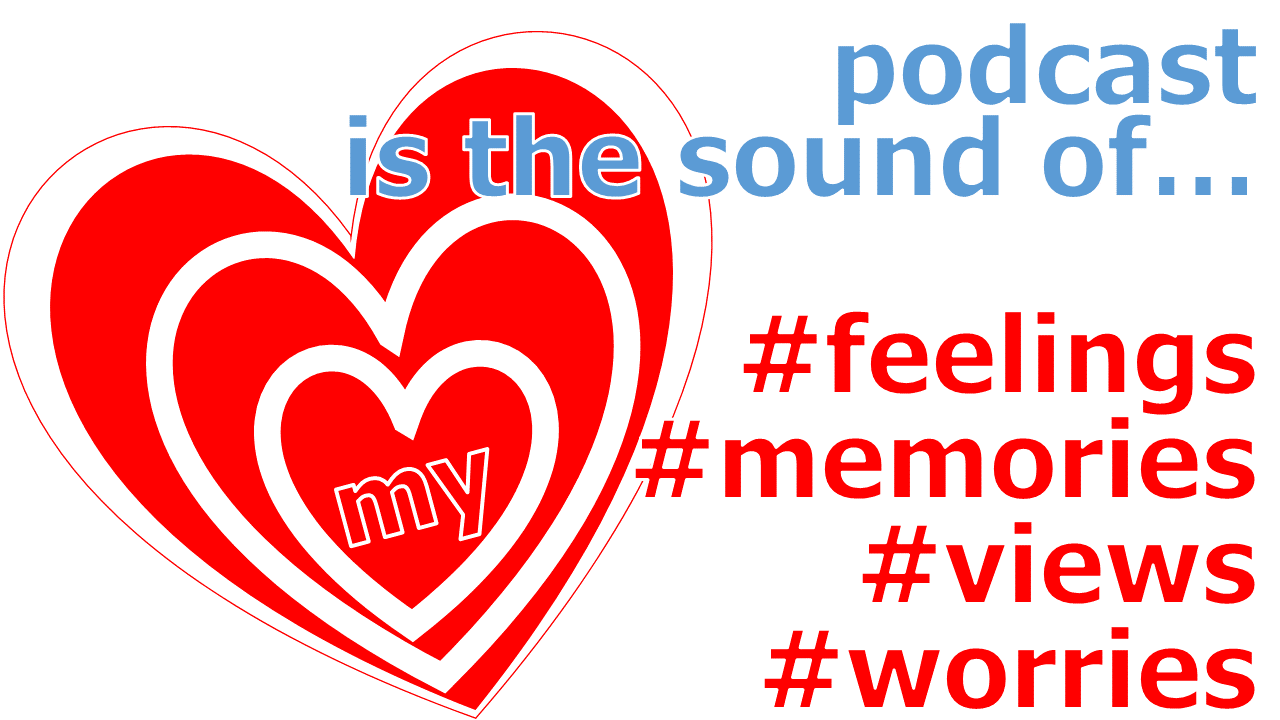
There are no facial expressions or body language in the audio podcast. Therefore, any emotions or hints of irony or clarification must be expressed with speech and voice.
The content must be offered in a linear fashion. While this applies to other formats as well, it is essential with the podcast.
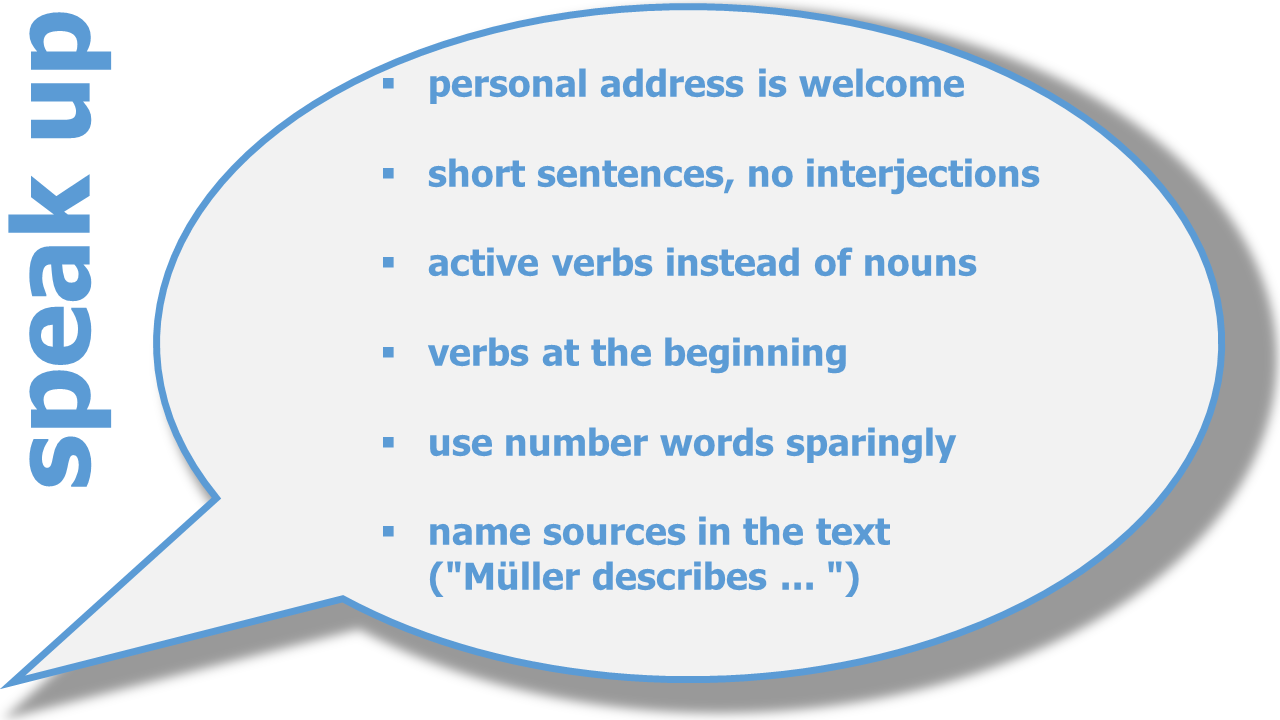
repetitions are important ^
Unlike in scientific essays and seminar papers, repetitions are important! Summaries of previously addressed topics allow the audience to "follow along" easily.
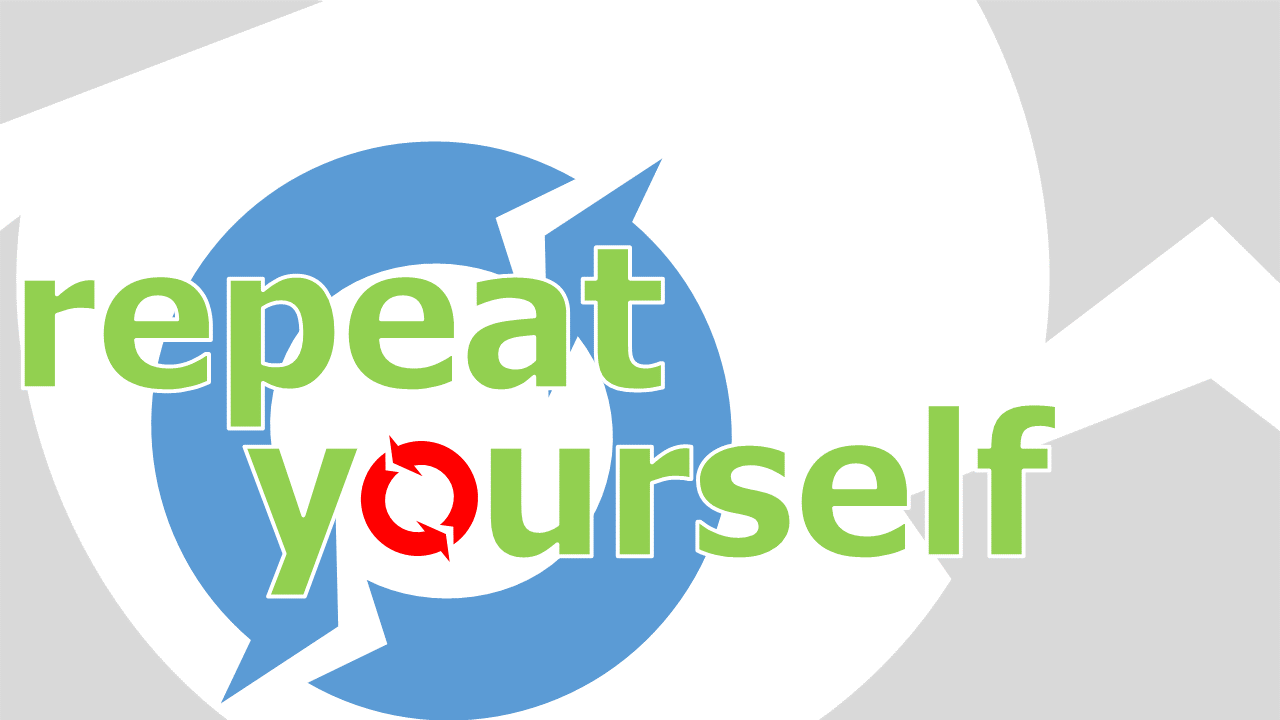
tips for a written script:
| Tip | Note |
|---|---|
| write as you speak | I speak to myself, as in dictation, the text step by step first and then write it down. again and again I speak my written text and try to imagine a relaxed conversational atmosphere. |
| look for short sentences | when listening to long sentences I quickly lose the context and can't remember all subordinate clauses. that's why I try to formulate sentences that are as short and simple as possible. |
| during a conversation: short paragraphs | especially in a conversation it is good if the conversation partners take turns well. I therefore try not to let the individual sections - even in an interview format - become too lengthy. |
| Repetitions** / redundancy | helps the listeners |
| paragraphs | help with (short) pauses in speaking |
| do not change pages in a sentence | |
| Cite sources | for audio, it is not possible to refer to a footnote. name all your sources as you speak (e.g. start a quote with the authors name) |
Always read the text aloud before recording!!! This will help you notice problems when speaking later. When listening, you can tell if the text can be heard and understood well.
2. Recording ^
Recording is usually the shortest part of a podcast episode. I need 10 to 20% of the total time for it.
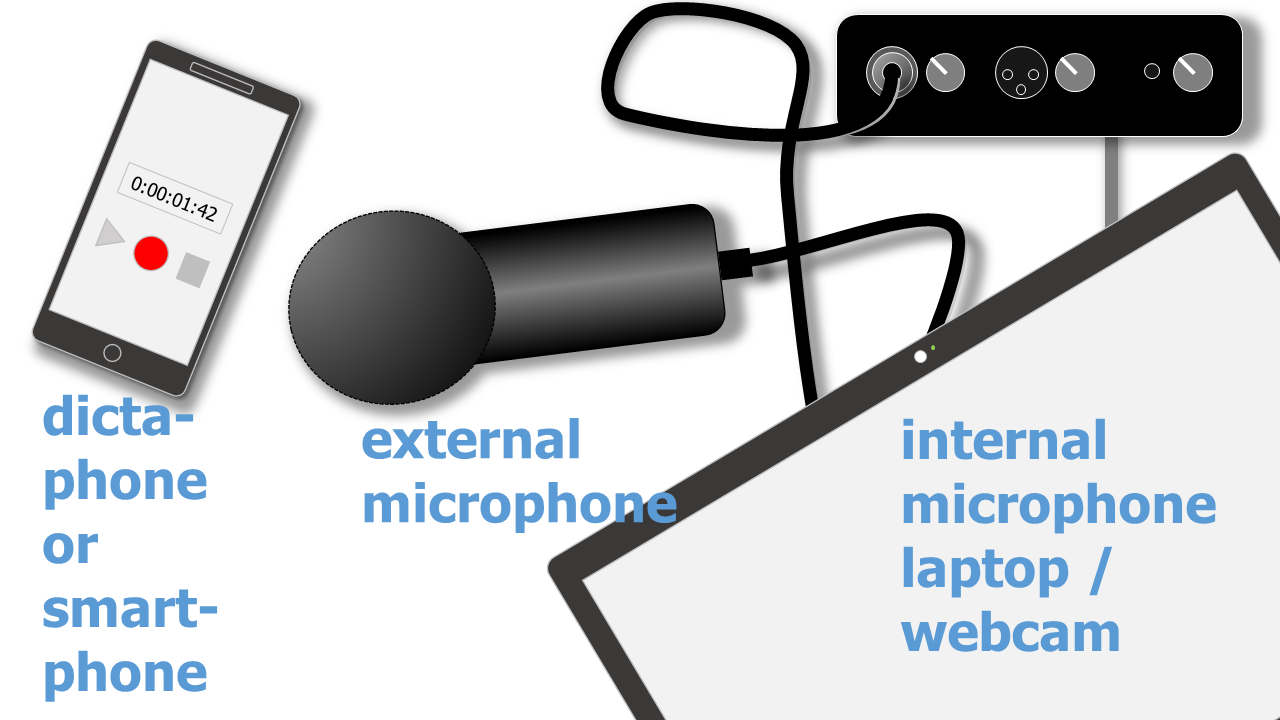
There are several variants for the recording:
| solo / alone | several people |
|---|---|
| monologue, narration from one perspective | conversation, interview |
Solo Recording ^
For a solo recording the following technical equipment can be used
- (digital) dictaphone e.g. an app on a smartphone: the quality of the microphones on a smartphone is relatively good. However, one disadvantage is that the microphones pick up noises in the room as well (see "Wardrobe" tip on this).
Internal microphone on the computer: webcams usually have built-in microphones. Here, too, it must be noted that noises in the room are also recorded
- external microphone as USB microphone or via an audio interface: a dynamic cardioid microphone that picks up frequency ranges between 100 and 18,000 Hz as evenly as possible is very suitable for voice recording.
several people in the same room ^
For recording conversations with several people who are in the same room, the following options are available:
-
dictaphone e.g. app on smartphone: the quality of microphones on a smartphone is relatively good. Make sure that the people are an equal distance from the microphone and that the microphone is pointed at them. One disadvantage, however, is that the microphones pick up noises in the room as well (see "Wardrobe" tip on this).
-
one microphone on the computer or via an audio interface: if the conversation is recorded with only one microphone, it is important that all persons are at the same distance & not too far away from the microphone.
-
external microphones via an audio interface: in a professional setting, each participant the conversation is given their own microphone (usually dynamic cardioid type). The audio interface can record multiple tracks and either send them directly to the computer (then it needs recording software on the computer) or use a memory card or internal memory. When choosing microphones, it is important that they record only in the vicinity and not the whole room sound.
Multiple People in Different Locations ^
Recording conversations with several people who are not in the same room is possible with the following tools:
| type of recording | advantages | disadvantages |
|---|---|---|
| broadcast services |
|
|
| video chat |
|
|
| screen cast software |
|
|
| external audio recorder |
|
|
| separate recording |
|
|

-
Recording via broadcast service: special broadcast services are used for spatially separated professional studio recordings, e.g. for radio production. These are usually chargeable and/or complicated to operate with many settings. In addition, the corresponding Internet ports must be enabled for communication. A solution, which is used from my view only in the professional area and is used by only few podcasters.
-
Recording the video chat: this requires a very good and stable internet connection. This starts with the need for all participants to connect to the router via LAN. If this is not possible, a place near the WLAN access point must be chosen to keep the connection quality as good as possible. Some video services offer direct recording. However, not only the sound, but also the image is recorded. In post-processing, the sound must be separated from the image so that it can be processed further. This requires an additional editing step with extra video editing software. **I advise against this solution, also because the data is stored on the provider's servers.
Example of a recording via a VideoChat online service as a video. Here the audio still needs to be extracted to create a podcast.
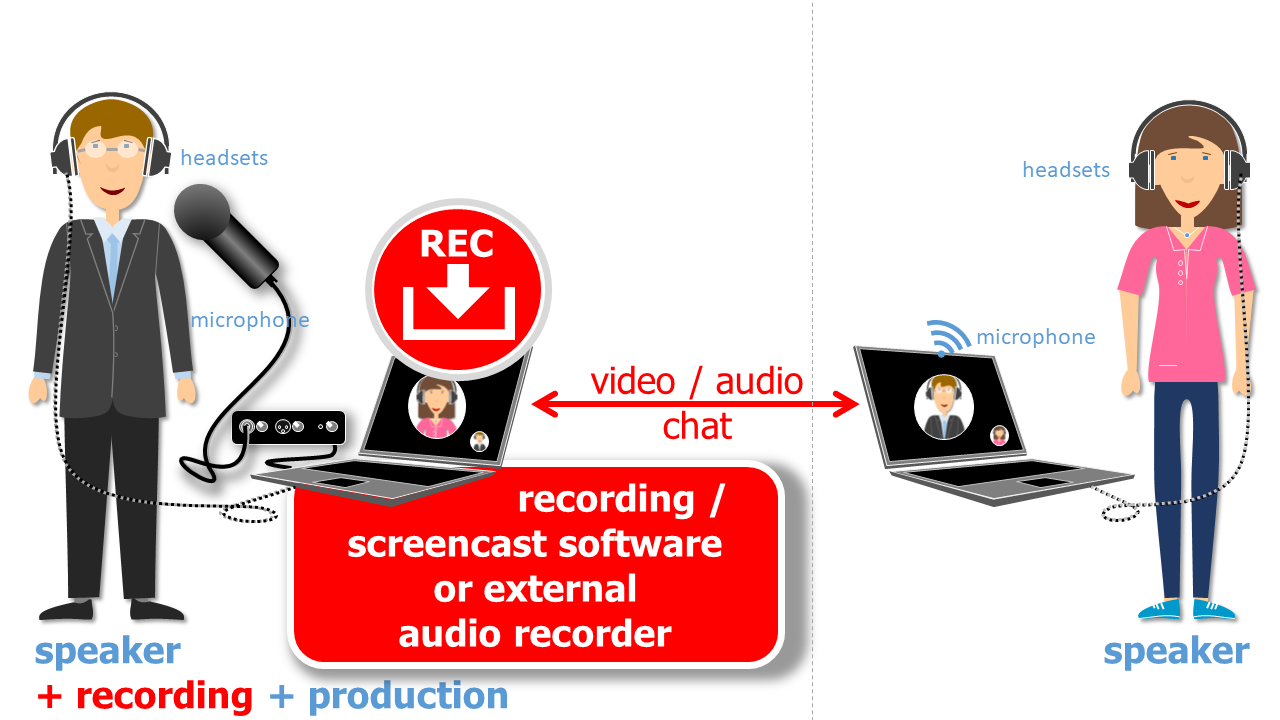
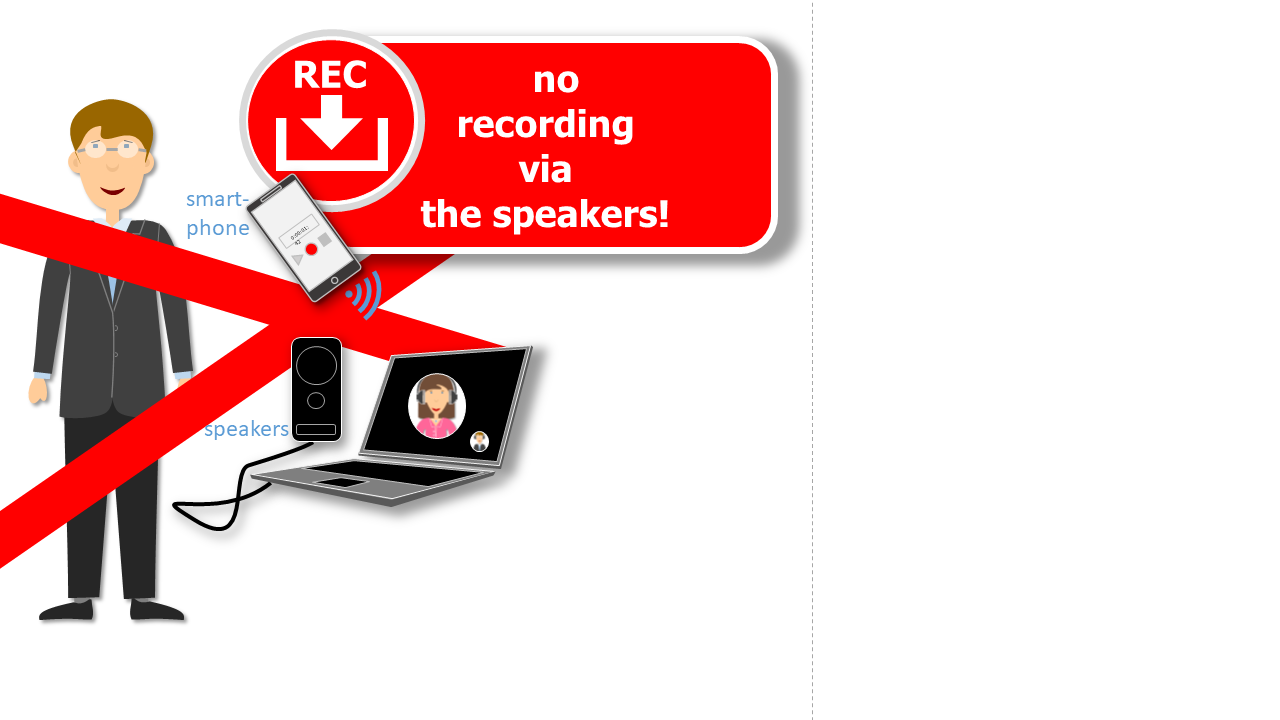
-
Recording the video chat with ScreenCast software: using ScreenCast software, you can record the VideoChat and your own audio. Some casters offer the possibility to save single audio sources in separate tracks. I use OBS Studio (open source, multi platform) for this. However, this is a somewhat more complex software, which requires some training time.
-
Recording via external audio recorder: the sound from the computer or phone is played via line-in or digitally into an external audio recorder. In addition, the own microphone is recorded. I use this solution. However, it involves additional hardware costs. I use this option for my podcast, feeding the sound of the conversation into the recorder via the headphone output of my computer. I record myself via a microphone (dynamic cardioid, XLR).
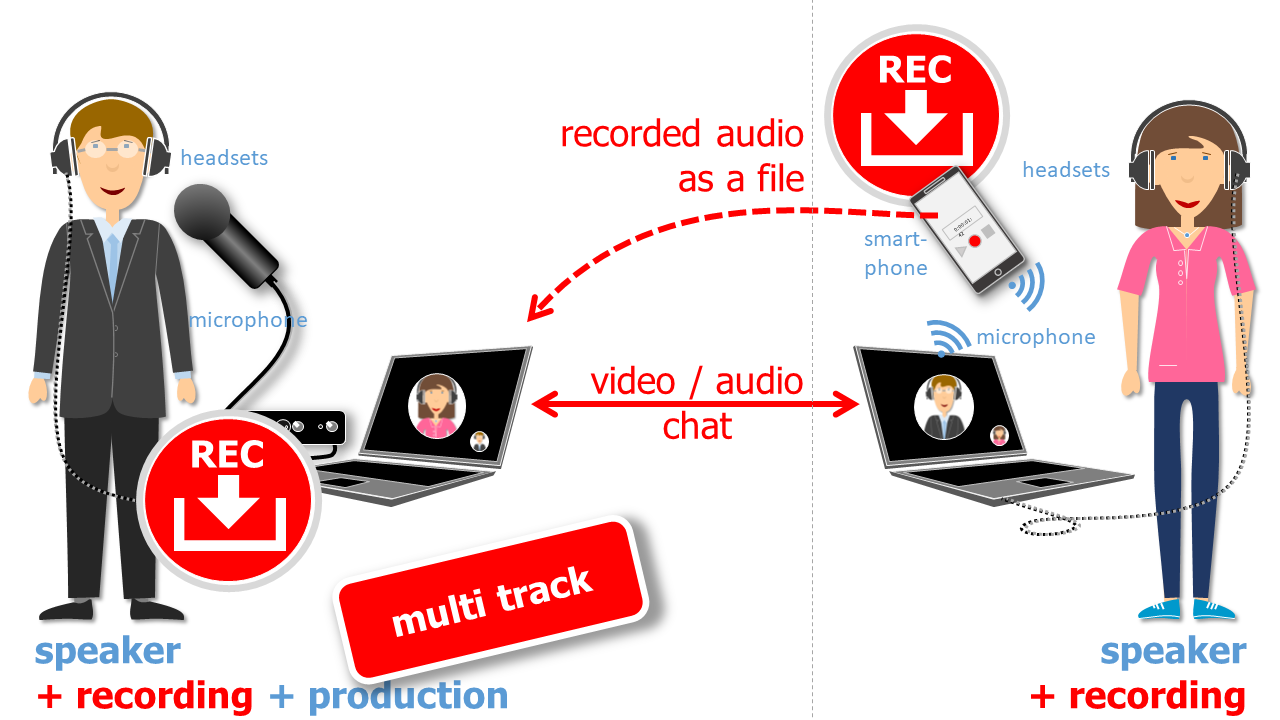
Separate recording: here, the conversation partners record themselves using a dictation app on a smartphone, for example. At the same time, the conversation takes place via a video chat or messenger service on the computer. Of course, it is also possible to record on the computer with the internal or an external microphone and have the conversation run via the smartphone. The separately recorded audio files are individual audio tracks in the post-processing. This solution is very suitable if the Internet connection is not very good. To make the recording sound like in the studio note the "Wardrobe" tip. I recommend this option because it gives a very good result with little effort!
3. Post Processing / Post Production ^
In post-production, I play the individual audio tracks together. I edit the recorded audio and cut out slips of the tongue and filler words, but also pauses that are too long. Finally, I save everything as mp3, ogg and AIFF, filling in meta information like the names of the people involved, the title of the episode, the name of the podcast, the year and the genre (podcast) so that players can display this information.
With practice, post-processing takes 1.5 to 2 times of the actual recording time.
Audio Editing ^
I import the individual audio files as different tracks, so that I have 2 mono tracks for an interview, for example. Then use the following audio optimizations for each track separately before I start cutting:
- compression (threshold: -12dB, noise floor: -40dB, ratio: 3:1, response time 0.5 sec, decay time: 1.0 sec).
- treble & bass (bass: +5dB, treble: +3dB, volume: -1dB)
- noise reduction
- normalize (perceived loudness to -23 LUFS)
test recordings post-processing: ^
online VideoChat without echo cancellation (HiFi setting) & external microphone (SuperCardioid)
online VideoChat without echo cancellation (HiFi setting) & external microphone (SuperCardioid) + effect: compression
online VideoChat without echo cancellation (HiFi setting) & external microphone (SuperCardioid) + Effect: Equalizer - boost basses and trebles
Test-Aufnahme: online VideoChat ohne Echounterdrückung (HiFi Einstellung) & externes Mikrofon (SuperNiere) + Effekt: Equalizer - NormalisierenTestaufnahme: Online VideoChat ohne Echounterdrückung (HiFi-Einstellung) & externes Mikrofon (SuperCardioid) + Effekt: Equalizer - Bässe und Höhen anheben
online VideoChat without echo cancellation (HiFi setting) & external microphone (SuperCardioid) + effect: 1. compression, 2. bass & treble, 3. normalize
Opener / Intro & Closer / Outro ^
Jingles and music are often played at the start and end of the episode. Here it is important to consider the rights of use and possible fees for the use. On the Internet, you can find some providers of inexpensive MusicLoops that are well suited for a jingle. The length is about 10 to 30 seconds.
4. Publish / Publication ^
For publishing, you need your own storage space on the net or a podcast host. Depending on the offer, an external host offers the possibility to create an RSS feed and distribute the podcast on several podcast and music platforms.
RSS / XML Feed ^
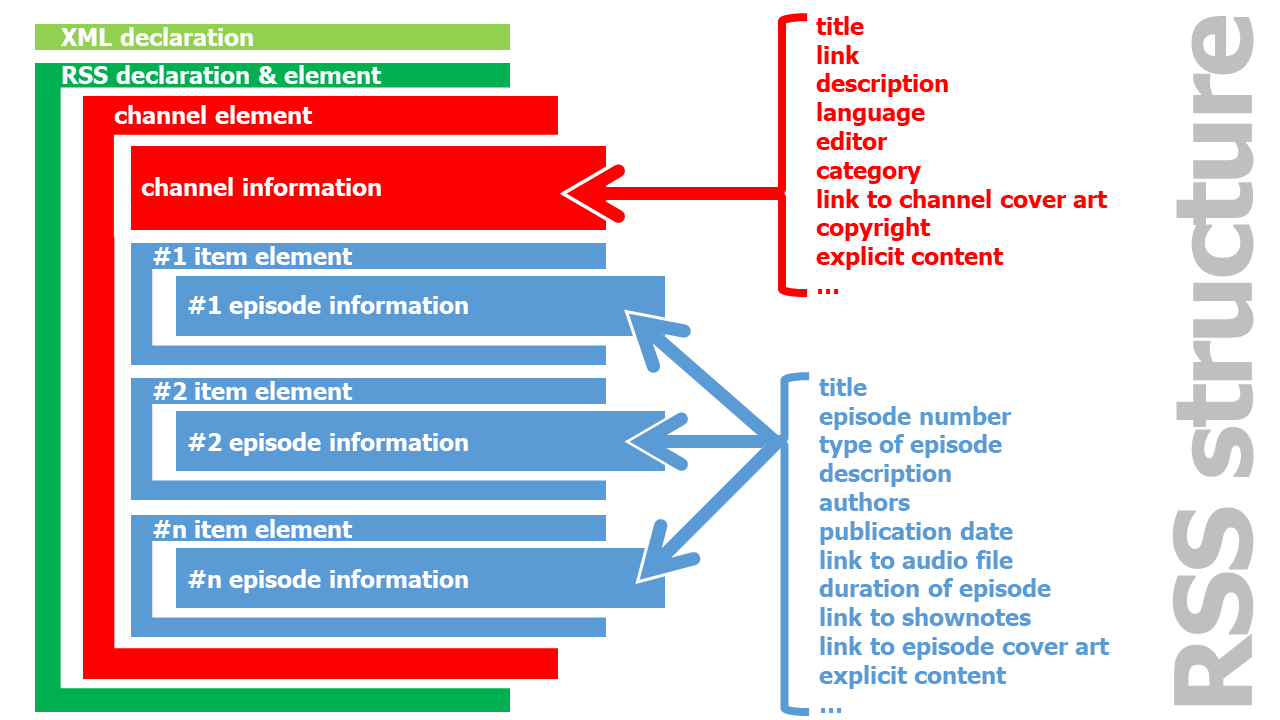
RSS is the short form for Rich Site Summary or Really Simple Syndication. The RSS / XML feed is a file that contains the meta information of the podcast and its episodes. XML is the short form for Extensible Markup Language. Here data and information are structured hierarchically. XML is platform independent and can be processed by computers as well as easily read by humans. A web-feed is information that communicates news but is not actively sent. Feeds can be subscribed to. In the case of podcasts, the podcast player regularly queries the feed to determine whether a new episode has been published.
The structure of the podcast RSS / XML feeds is divided into
- into a header, where the XML definition can be found
- in the channel part with all information about the podcast
- embedded are the items for each episodes with informations
- the end of the podcast section
- the end of the XML file
The RSS / XML feed contains information about title, descriptions, keywords and classifications, author, link to the audio file or duration of the episode. Even if many podcast editor programs create an RSS / XML feed automatically, it is worthwhile to structure it yourself and at least check the content. Most RSS / XML feed generator programs unfortunately include a lot of additional advertising information that is not absolutely necessary for a podcast.
The file extension is *.XML
I provide here a simple RSS / XML online generator, where I made sure that the most important podcast meta information is generated, without useless parts. From both parts the whole XML file is created.
Online Editor: Podcast RSS/XML
Online Editor: Episode RSS/XML
Cover Art & Images ^
All podcasts have a cover image. Each episode can also have its own image. This allows podcasts to be quickly recognized from the overview list of all podcasts.
The following general conditions apply to the cover images:
- min. size 1.400 x 1.400 px
- max. size 3.000 x 3.000 px
- resolution: 72 dpi
When designing the cover art, please keep in mind that the image is only displayed very small in the podcast player. Some podcast players reduce the visible size to 30 x 30 px. So be sure to look at your cover image in this size (you can resize your design in any pixel image editor and then view it on your smartphone, for example). Too many and too small fonts or too much details in the image are therefore not useful. It is also not advisable to use the lower third of the image, because sometimes the player's own buttons are superimposed here and thus the contents of the image are not well or no longer recognizable. The color scheme, logos and fonts should correspond to the corporate design, which is also used on the website as a recognition effect.
PowerPoint template for creating cover images. When the image is exported as JPG, PowerPoint saves a resolution of 92dpi and there is no option to change this directly during the export process. To use the image for podcasts, it must be reduced to 72dpi (for example, by using the open source image editor gimp). The size is then 3,000 x 3,000 px.
This is how the cover art template looks like as a mini thumbnail with 30x30px:
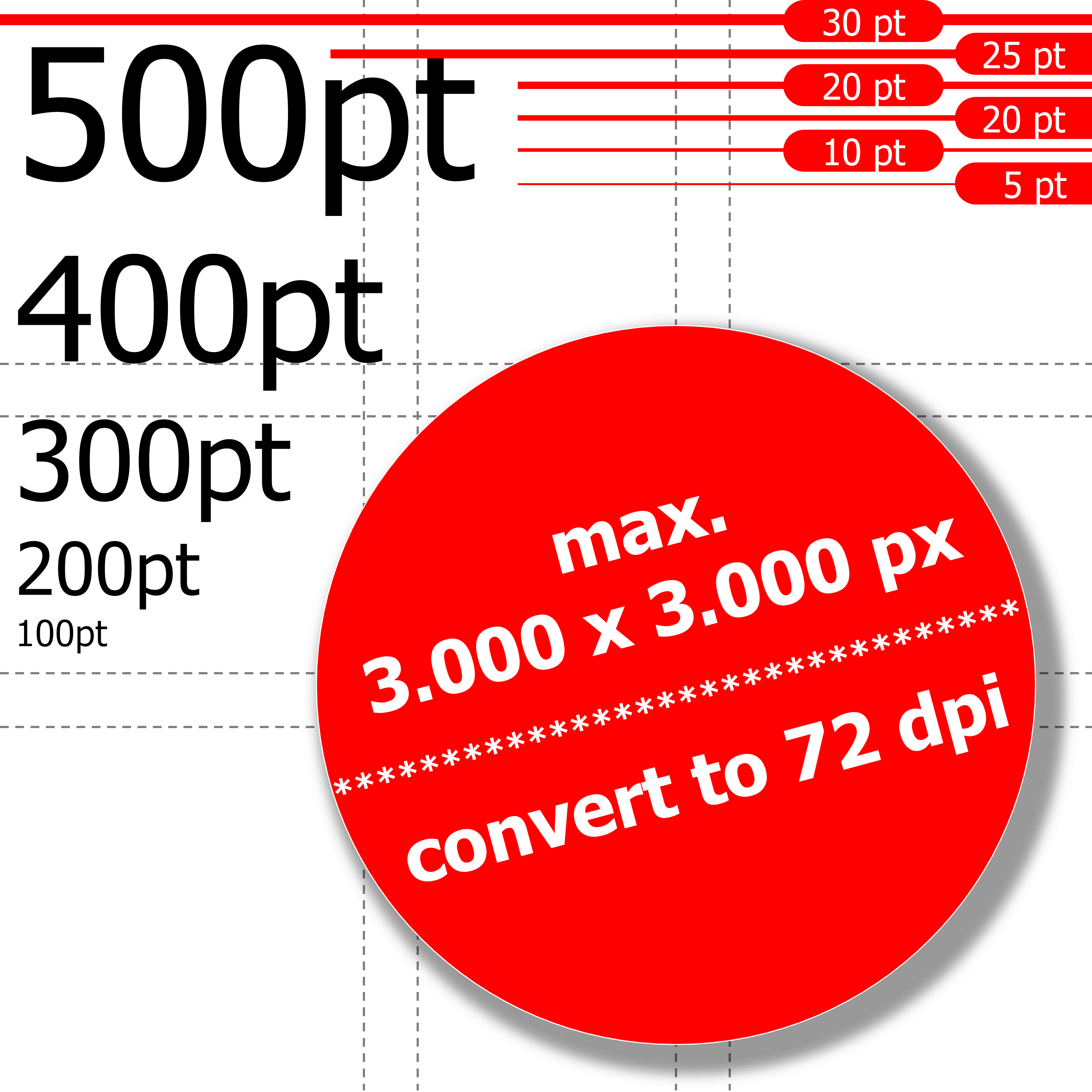
Shownotes & Transcript ^
- Additional information such as links, further content, ... can be found in shownotes. These can be referred to in the podcast episode.
- To read the spoken text, it makes sense to create a transcript. This is usually without pauses, other articulations, dialect words, ... and is based on high-level grammar and spelling.
- Some podcast players allow direct access to the transcript and the show notes. However, the links to the content can also be specified in the description of the RSS / XML feed as HTML link.
MP3 Audio File ^
Any podcast player can play mp3 files. That's why this is the normal format for the audio file of a podcast episode. The mp3 file must be compressed with a constant bitrate (not variable!). Suitable for this purpose is a quality of 192 kbps.
Other audio formats are AAC compression (m4a) or Opus (ogg) files. These are slightly better suited for audio streaming than mp3, but many players currently only allow mp3 and a single audio file in the RSS / XML section of the episode.
Bonus Track: Recording Tips ^
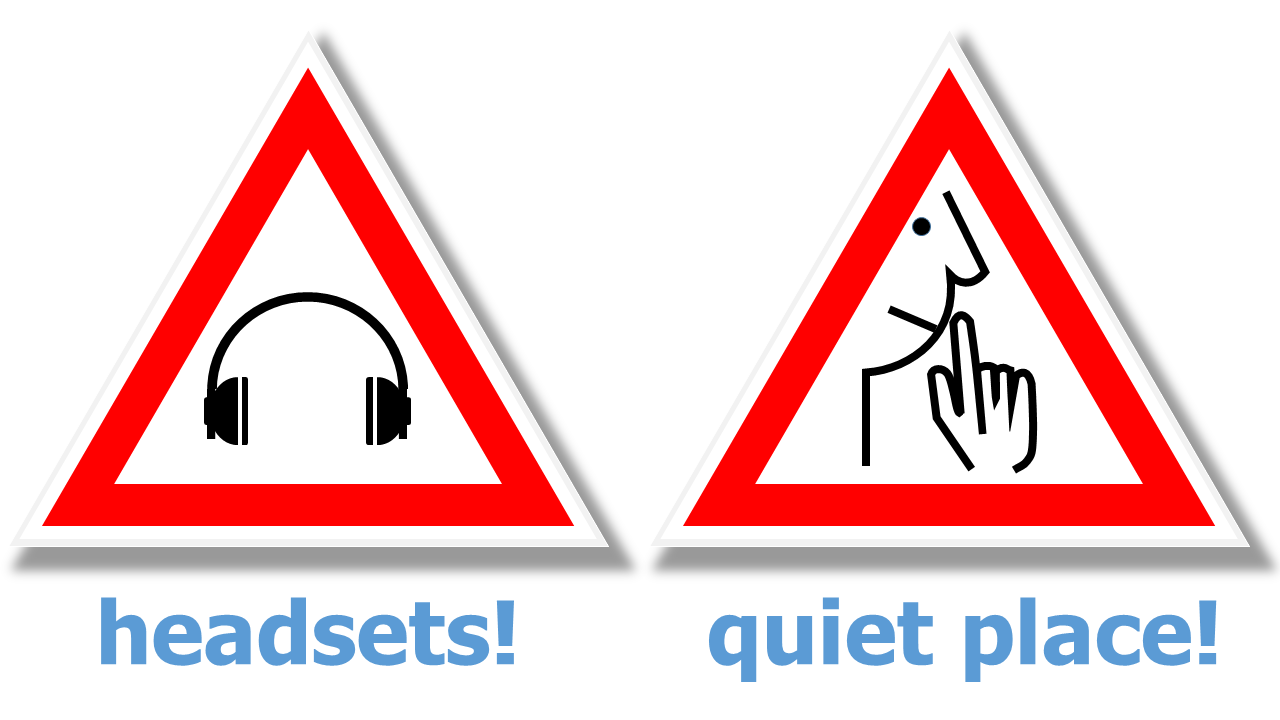
mandatory: headphones
Headphones are mandatory when recording, so that no echo is recorded or the echo algorithms of the video chat tools do not cut off the beginnings of words!
no go: headset with built in microphones
Please do not use headset microphones. These have poorer recording quality, plus longer hair obscures the microphones and wired headsets often rustle when moved.
important: keep your hands and body still
Keep your hands steady and the distance and position of the microphone to your mouth always constant. This is a little unusual at first. Anything else, however, will lead to noise or fluctuations in volume.
keep calm and speak slowly
Speak slowly so that your listeners can follow along! Even if this sounds strange to you at first, speaking too fast means poor listening. Yes, you will be excited when you record an episode. This is normal and will happen to everyone. Some just show it more like others.
A few tips will help you
- find a quiet environment in which you feel comfortable
- before you start recording, relax, get calm! (do breathing excercises e.g. inhale through the nose for 6 seconds and exhale slowly for 6 seconds without stopping but very smooth transitions like a sine curve)
- breathe with your belly (or rather with your diaphragm): put your hand on your belly and feel how it moves when you breathe in and out.
- speak standing up
- you can rework all the mistakes! so don't be afraid: you're not live and before your audience hears you, you can edit out mistakes, rework the audio, and still decide to just re-record that episode. when you have misspoken, pause briefly, take another calm breath in and out, and then repeat the sentence or passage
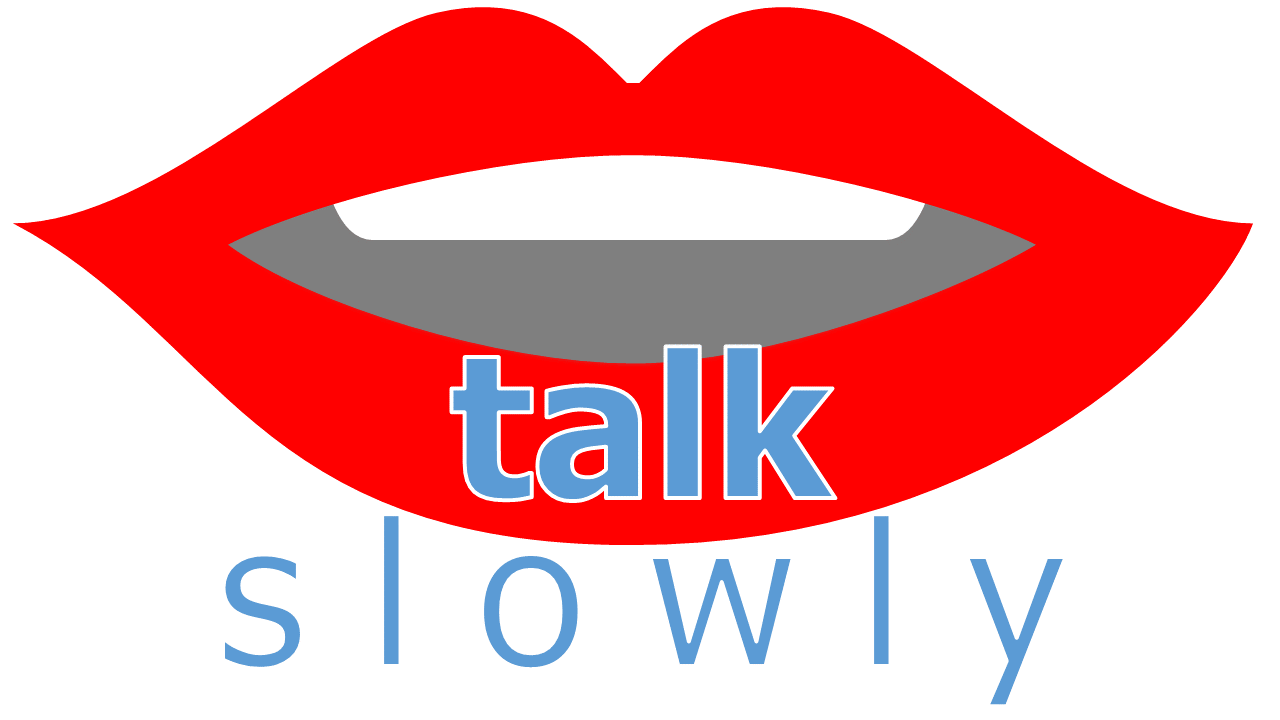
Tip: Recording in the wardrobe
A professional studio recording can easily be recreated at home. Of course, it is not exactly as good, but the result can be heard very well in my opinion! To do this, the audio recording is made in a wardrobe. The clothes reduce the reverberation. Even if this sounds funny at first, it is a very effective and simple way to improve the recorded sound.
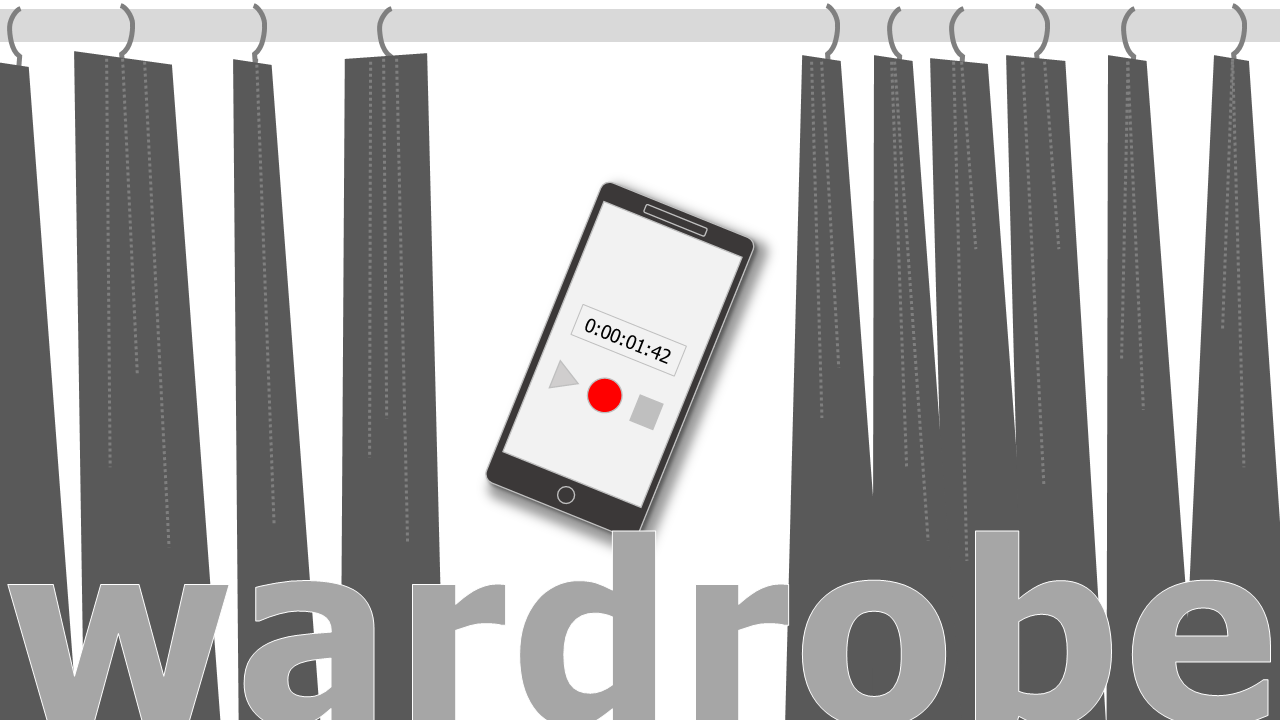
listen to the differences:
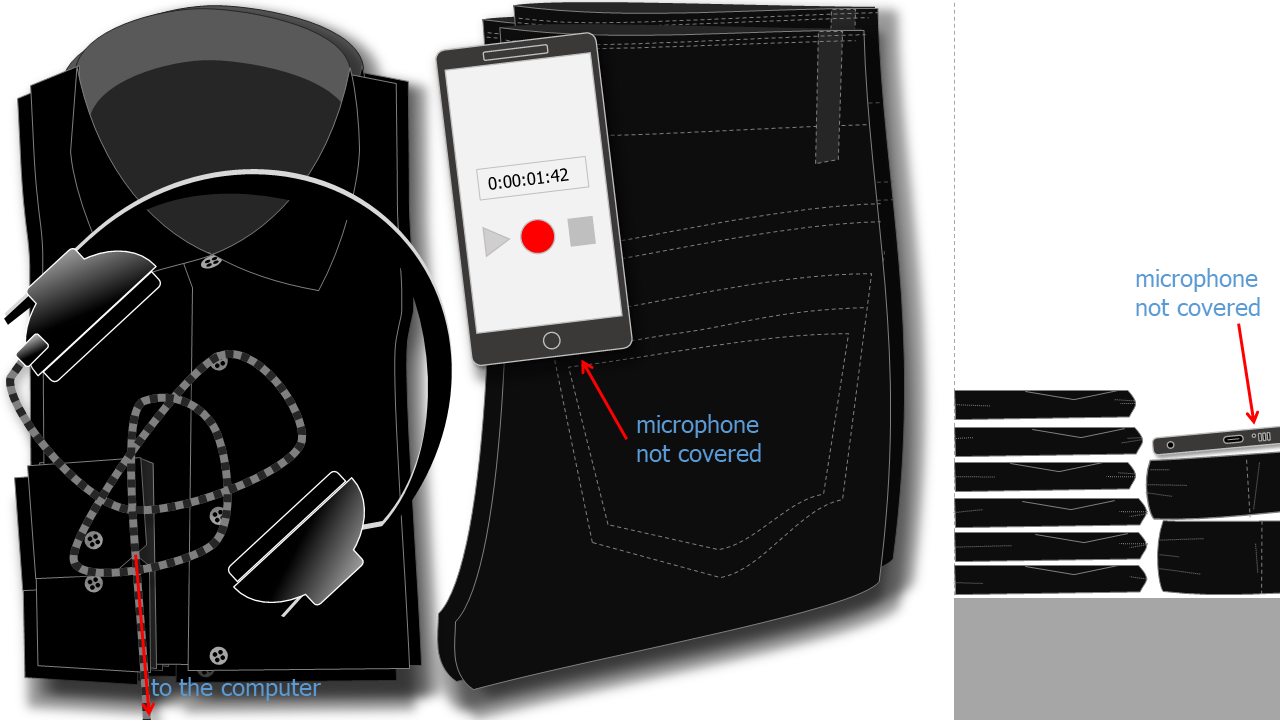
**This tip is used by many podcast producers. Gladly still use a blanket, which over the head also reduces the room reverberation behind one.
test recordings microphones & transmissionpossibilities ^
online VideoChat & internal microphone from laptop/PC or webcam
online VideoChat & headset simple, wired
online VideoChat & headset telephony, wireless
online VideoChat & external microphone (super cardioid)
online VideoChat with echo cancellation & external microphone (lavalier microphone)
online VideoChat with echo cancellation & external microphone (lavalier microphone)
online VideoChat with echo cancellation & external microphone (super cardioid)
online VideoChat without echo cancellation (HiFi setting) & external microphone (super cardioid)
online VideoChat with echo cancellation & external microphone (large diaphragm microphone)
online VideoChat without echo cancellation (HiFi setting) & external microphone (large diaphragm microphone))
small room - in front of the PC
small room - reflective walls / surfaces
large room - carpet, furniture, textile
in the wardrobe
 Creative Commons 4.0 International Licence [CC BY 4.0]
|
Podcast - Christian Huber
|
12.09.2024
|
Impressum
|
Datenschutz
Creative Commons 4.0 International Licence [CC BY 4.0]
|
Podcast - Christian Huber
|
12.09.2024
|
Impressum
|
Datenschutz
Generative pre-trained transformers / large language models were used to proofread the text on this page.
![Creative Commons 4.0 International Licence [CC BY 4.0]](https://melearning.online/WissenschaftlichesArbeiten/themes/simpletwo/images/meLearning/cc-by-large.png)
